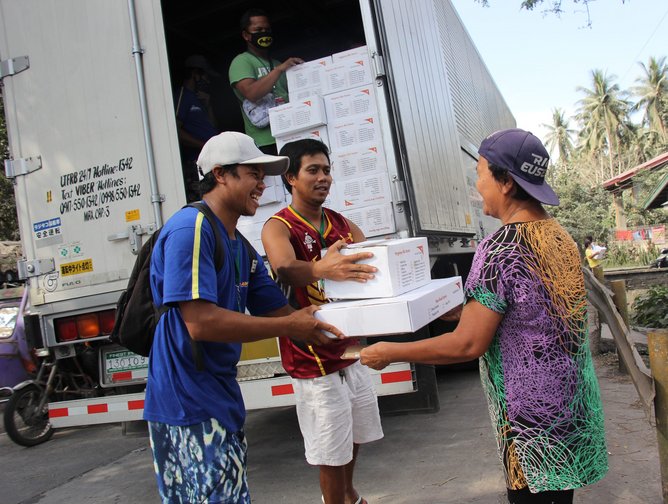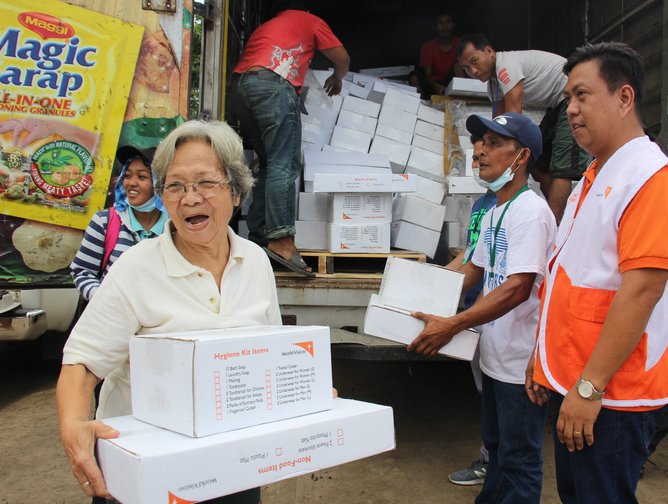World Vision’s Gift in Kind program is delivering aid to the world’s most fragile communities
In 1947, Reverend Bob Pierce gave the last five dollars from his pocket to help care for an orphaned girl from China named White Jade. Three years later, Pierce founded an organization dedicated to helping children in dire need of care around the world. Over the next 65 years, World Vision has grown into a powerful and tenacious non-governmental organisation (NGO), striving for the elevation of deprived communities out of poverty. Today, it works in nearly 100 countries and in just five years, together with partners and donors, has impacted the lives of over 200mn vulnerable children by tackling the root causes of poverty. “Our strategic vision is to step into the most fragile countries, in the most fragile contexts, to help people and communities out of poverty,” says Tim Covell, Supply Chain Director at World Vision. “World Vision is focused on the twin pillars of humanitarian community development and disaster relief. There are a host of programs that work together under those two pillars, including sanitation, bringing clean water to communities, health, education, agriculture – helping a community break the cycle of poverty over the course of a 15-year program.”
Covell spent the two decades preceding his move to World Vision in the private healthcare technology sector. “I loved the technology, loved the teams – I really had no intention of moving on,” he recalls. “As I was thinking about my life, I realized it was time to use those skills I’d learned over the years serving in a humanitarian organization.” In December 2016, Covell jumped at the opportunity to work for World Vision and has since led the company’s Gift-in-Kind (GIK) operation. “A GIK is where a corporation will donate products instead of cash,” he explains.
Every year, Covell and his three major teams work tirelessly to process, allocate and distribute tens of thousands of pallets of donated goods – ranging from bicycles and wheelchairs to clothing and school supplies – to some of the world’s most isolated and fragile communities. “We've grown from 30,000 pallets to 84,000 pallets over the last three years,” Covell says. “It would be impossible to handle that degree of growth without continuous improvement and change to the way that we operate and drive our processes.” Covell sat down with us to discuss World Vision’s GIK operations, and the ways in which he and his team push themselves to continually improve and better serve those in need.
Unlike a traditional procurement role, the GIK supply chain operates in response to donated items from large corporations around the world. “We position ourselves as a business solution to corporations to deal with excess inventory, reverse logistics, or whatever their business challenge might be,” says Covell. Dealing with this influx of donations is the role of the first of Covell’s three teams: Capacity & Integration. The team interacts with the various local operatives around the world in order to establish what each community needs to better progress towards becoming self-sustaining. “Each year they reach out to countries around the world in order to understand what kind of products they can use to facilitate their ministry. Then we create a global demand plan that predicts how many containers will ship to each country and which product types they need to contain,” explains Covell.
“In the world of GIK, as opposed to the world of procurement, it's distinct in that we can’t predict 100% what kind of product we’re going to get,” he continues. “We start with a demand plan and then, as we receive donations over the course of the year, this team will do their best to align the products that were donated with the demand that was placed on them by the various countries.” While the GIK model creates unique challenges in terms of logistics, Covell notes that the donation process makes for more efficient “acquisition” power on behalf of World Vision. “We want to make sure that every product that we ship and spend freight dollars on is going to help a community and facilitate ministry in whatever capacity it’s being used for,” he explains. “GIK is a powerful element of the overall ministry, because it’s such a magnifier.” Covell’s department ensures the value of donated items is efficiently distributed, allowing for even more aid to be provided to those who require it than through traditional procurement NGO practice. “For every dollar we spend in freight, there’s almost $20 worth of product that we’re shipping and being able to bring into play for ministry utilization,” he maintains.
The second team handles logistics, both domestically and internationally. Covell praises this team for its role in overcoming geographic hurdles during the ‘last-mile’ before delivery. “This team has a very challenging role, because the countries where we operate typically have inadequate infrastructure, and trying to get products to communities in need means you're typically required to go far off the beaten path.” In order to aid in the delivery of supplies to the farthest corners of the planet, World Vision has established a decade-long partnership with freight forwarding business Missionary Expediters. “They are a fantastic asset to us in being able to crack the code of accessing some of these very challenging countries,” says Covell. “As an NGO, we’re obviously looking to be very frugal, but a relationship with a trusted partner that knows its way around getting freight into challenging areas is also essential. Missionary Expediters just ticks all the boxes; we’re very pleased with our partnership with them.”
The third team Covell oversees is the GIK division’s distribution center in Pittsburgh, Pennsylvania. “They have a significant space there where we store and then sort products. That’s where the magic happens,” Covell explains. The center uses numerous volunteers to sort, package and dispatch items to World Vision’s entire network. Given that the workforce is largely made up of volunteers, the Pittsburgh center is the perfect demonstration of the need for clear, unified processes in order to produce consistent results. “One of the things that I'm really passionate about is having good documentation, as well as work instructions that really establish a foundation for what we do and how we do it. Every day you have a different group coming in, so we need to have a standard mechanism,” says Covell. “Having a consistent process is really the foundation for continuous improvement. If we’re all working the same way and with the same output, we can build upon that platform to create and implement changes and then improve our working structure; so process control documentation creates the foundation for future continuous improvement.”
Continuous consistent improvement is reliant on clear communication and coordination, and Covell stresses that technological advancements over the past decade have been essential to that process. “Recently we invested in the Microsoft Dynamics Enterprise Resource Planning system,” he says. “It’s been a powerful tool to be able to synchronize different portions of the team, in the US and internationally.” Covell describes this, along with a new Transportation Management System, as “a real game-changer”. “Being able to manage large donors, having the transparency and the communication efficiency between the logistics teams and the various warehouses around the country, has been a real asset,” he reflects.
Looking to the future, the GIK operation has cause for celebration. “In June, we’ll be shipping our 5,000th container,” Covell says with pride. The project is far from over though, and the GIK team will continue to leverage every tool at its disposal in order to continually improve its ability to deliver vital supplies to improve the quality of life of the people who need it most. “Our journey ahead is continuing to figure out how to be good stewards of the freight dollars that are donated to us and support World Vision’s ministry operations.”






